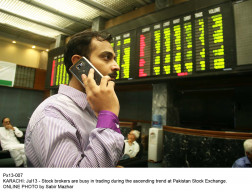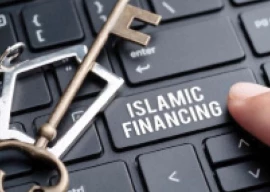
The Middle East and the United States are decreasing in importance as export markets for Pakistan, as exporters increasingly target countries in South Asia and East Asia.
While the European Union is still by far the largest destination for Pakistani exports, South Asia – which includes Afghanistan, Bangladesh, Bhutan, India, Maldives, Nepal, and Sri Lanka – is now the second-most important market for Pakistani products. The EU absorbed 24.6% of Pakistani exports, compared to 28.4% in 2003. By contrast, South Asia used to account for just 6.3% of Pakistani exports in 2003 and is now the destination for 16.7% of Pakistan’s export earnings.
This growth appears to be led by Afghanistan, which is now Pakistan’s second-largest single country market, behind the US. Pakistan exported $3.8 billion worth of goods to the US in 2011 and about $2.7 billion to Afghanistan. The US and Canadian share of Pakistani exports has dropped from 24.7% in 2003 to 16% last year.
Perhaps surprising, however, is the growing importance of East Asia – particularly China – as an export destination for Pakistan. People are familiar with the fact that Pakistan’s imports from China have been rising substantially. Yet most seem unaware that China is also one of the two fastest growing export destinations for Pakistan (the other being Afghanistan). Pakistani exports to China have been growing at 26.3% per year for the last eight years, making China the number four destination for Pakistani exports, up from number 13 eight years ago.
Pakistan’s trade with China is, nonetheless, highly unequal and somewhat colonialist in nature. More than three-quarters of Pakistan’s exports to China are raw materials, with cotton accounting for 70% of goods leaving Pakistan for Chinese ports. (China accounts for more than half of all raw cotton exports from Pakistan.) Meanwhile, China’s exports to Pakistan – which totalled $6.5 billion last year – are mostly electronic equipment and industrial machinery.
An even more surprising fact: the importance of the Gulf Arab states to Pakistan’s exporters appears to be declining rapidly. The Gulf Cooperation Council (GCC) – comprising Saudi Arabia, United Arab Emirates, Kuwait, Qatar, Bahrain and Oman – now accounts for 11.1% of Pakistan’s exports compared to 15% about eight years ago. Much of this shift is attributed to the fact that Pakistan now exports many more goods directly to India, compared to only a few years ago, when the UAE served as a conduit between the two countries.
And despite not granted preferential trade status to Pakistan, the EU has maintained its position as the largest destination for Pakistani exports. Within Europe, the biggest market for Pakistani exporters is Germany, followed by the United Kingdom and Italy.
While Pakistan’s trade balance has been consistently deteriorating over the past few years, it has not done so uniformly. The bulk of the increase Pakistan’s trade deficit can be attributed to higher oil prices, which have taken Pakistani imports from the Gulf to $16.1 billion in 2011, from just $3.8 billion in 2003.
The data on Pakistan’s trade patterns reflects an important point: Pakistan is no different from the rest of the world when it comes to the fact that it relies increasingly on exports to Asia, rather than the older, developed markets of Europe and the US.
However, somewhat distressingly, Pakistan’s exports do not seem to have moved up the value chain: Pakistan’s single biggest export has remained the same since 1972 – raw cotton. Before 1972, the biggest export earner for the country was raw jute from what was then East Pakistan.
And while the increased diversification has meant that Pakistani exporters are now less vulnerable to economic slowdowns in Europe and the US, Pakistan is now more vulnerable than ever to a slowdown in the Chinese economy. In addition, much of the exports to Afghanistan are likely to begin drying up once US forces exit that country in 2014. The picture for Pakistani exports is a lot less rosy than it first appears.
Published In The Express Tribune, June 24th, 2012.
COMMENTS (10)
Comments are moderated and generally will be posted if they are on-topic and not abusive.
For more information, please see our Comments FAQ


1731637727-0/Bear--(1)1731637727-0-165x106.webp)

1731619853-0/ice-cream-(1)1731619853-0-165x106.webp)












@What's in a name Sorry mate. I just re-read what you had written: "increase the capital for consumption and the purchasing power increases automatically", and realised that you mean exactly what I said about the American solution. Just want to add that this too can be done via the Black economy.
@What's in a name "It all boils down to affordability, there can be good products and if people cannot afford the goods, then it is as good as a naught." I completely agree.
This is an problem which has been long been recognised. The American solution is to provide their citizens with credit with which they can buy otherwise unaffordable goods. This allows the creation of industries which would not otherwise be viable. The ultimate creditors are foreigners like the Chinese and Japanese who lend the American consumers the money to buy Chinese & Japanese products.
In our case a possible solution is to tap the vast "parallel economy" aka "black economy", which is otherwise languishing for little gain, in Switzerland etc. This capital can gain more interest if invested in Pakistan, to finance industries mapped out in a grand scheme of vertically integrated production (basic industries like steel and petrochemicals feeding secondary industries like automotives and plastics, feeding tertiary industries like transportation & consumer goods etc). The raw material, coal, iron ore, labour etc already exists in Pakistan.
What do you think ? Could this work ?
In addition, much of the exports to Afghanistan are likely to begin drying up once US forces exit that country in 2014. ------------------ that says it all as for china beign the primary market for pakistan neighbhouring countries are supposed to primary markets, hopefully pakistani Kakhi realise that and allow business to flourish between neighbhors
@Riaz Haq: Thankfully for a change, he has not attached a web link, with his replies. @Alami Musafir:"Pakistan’s internal market is vast, grossly under-exploited and captive." It all boils down to affordability, there can be good products and if people cannot afford the goods, then it is as good as a naught. Rather, the solution I would propose is increase the capital for consumption and the purchasing power increases automatically irrespective if produces locally or have to be imported. " Pakistan’s exports tilting to Asia, away from GCC, US", it is anything but natural to see this trend, what with the worlds 2 largest countries are its next door neighbors and also having great appetite to consume goods and services. Besides by exporting to the neighboring markets it would only save on transportation and shipments and also the refrigeration time if necessary. Rgds P
it very well indicates that on broader context pakistan is still an agrarian country. the industries and all are just underperformer and drawing back pakistan. thanks to china
Ra cotton exports from Pakistan are in the range of 100-200mn US dollars. Yarn exports are close to US 1.5 billion dollars. Bed sheets and garments exports now account for more than US 6 billion. Please get your numbers checked.
There is a huge export market in Latin America. Why our exporters are not focusing on Argentina, Brazil, Chile, Colombia, Mexico. They are all growing rapidly.
Pakistan's internal market is vast, grossly under-exploited and captive. Instead of offering it on a plate to India, China and others, local industrialists should be given preferential treatment by the Pakistan government. The Chinese and Indian industries both grew by exploiting their own internal markets. Tariffs against imports and incentives (favourable taxation, subsidies etc) to local producers would do the trick.
Afghanistan exports will drop to zero when Americans leave and take their follars with them